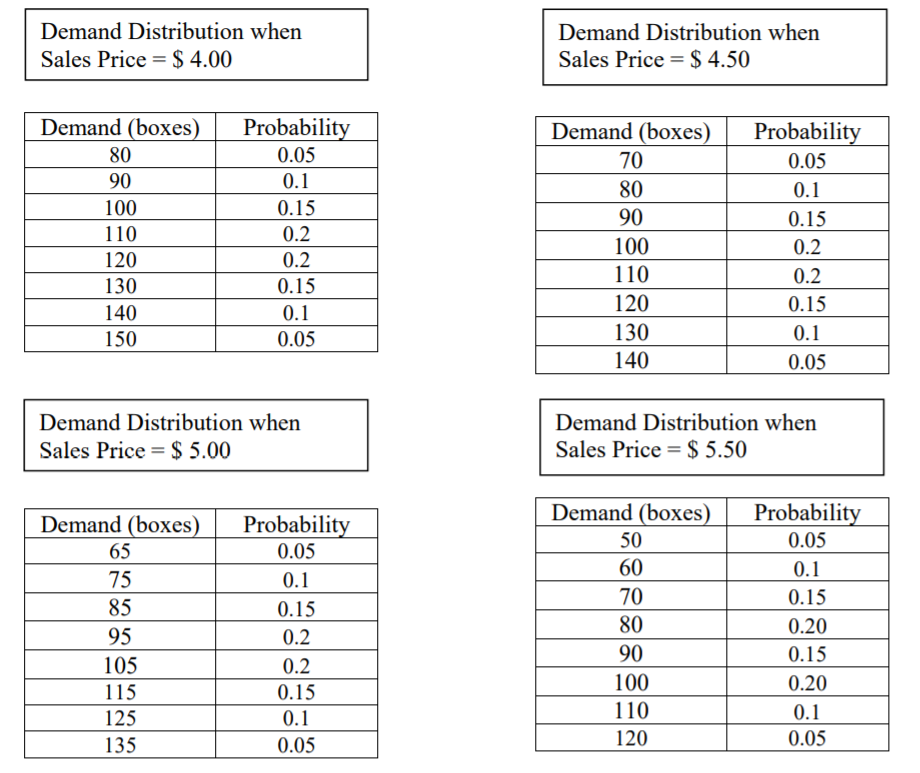Question
The Supermarket Store is about to place an order for Halloween candy. One best-selling brand of candy can be purchased at $ 2.50 per box
The Supermarket Store is about to place an order for Halloween candy. One best-selling brand of candy can be purchased at $ 2.50 per box before and up to Halloween. After Halloween, all the remaining candy can be marked down and sold for $ 1.00 per box. Assume that the loss in goodwill "cost" stemming from customers whose demand is not satisfied is $ 0.35. The store is considering a price per box of $ 4, $ 4.50, $ 5, and $ 5.50. Recognizing that demand is price dependent, through market research the store determines that demand distribution for these prices is as follows.


Step by Step Solution
There are 3 Steps involved in it
Step: 1

Get Instant Access to Expert-Tailored Solutions
See step-by-step solutions with expert insights and AI powered tools for academic success
Step: 2

Step: 3

Ace Your Homework with AI
Get the answers you need in no time with our AI-driven, step-by-step assistance
Get Started


